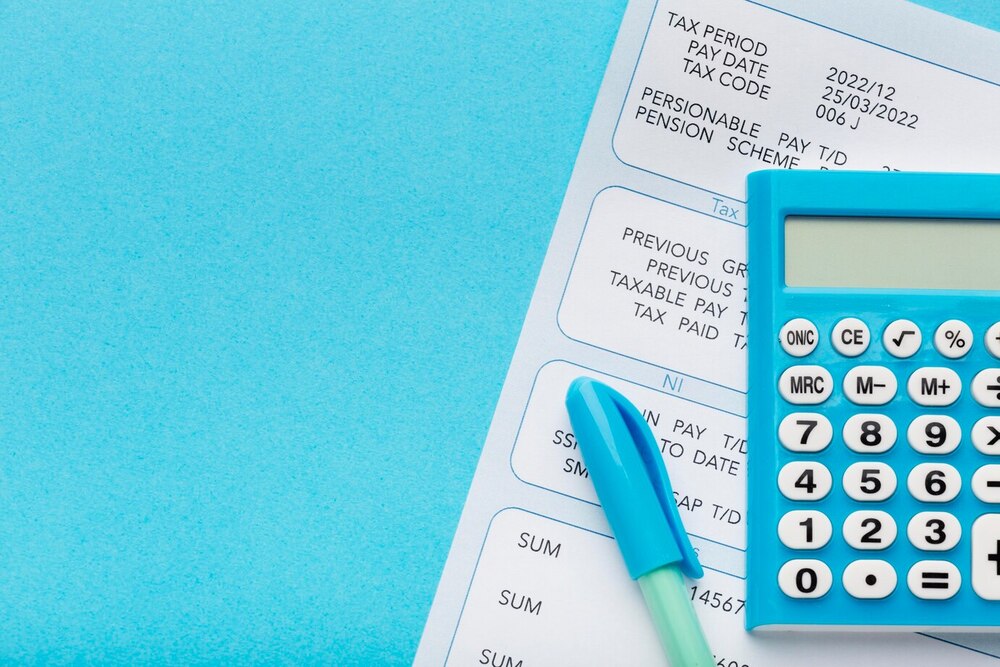Vietnam company tax rate: Corporate tax, VAT, Incentives

The Vietnam company tax rate plays a critical role in shaping business decisions for both local and foreign investors. This guide provides a clear overview of corporate income tax, VAT, and key incentives currently available in Vietnam.
Table of Contents
What is Corporate Income Tax (CIT) in Vietnam?
Corporate Income Tax (CIT) is one of the most essential components of Vietnam’s business tax system, imposed on companies generating income from business operations within the country. It applies to both domestic and foreign-invested enterprises (FIEs).

Legal basis of corporate tax (Law No. 14/2008/QH12, Decree 218/2013/ND-CP)
The corporate income tax in Vietnam is governed by a clear and structured legal framework, ensuring transparency for both local businesses and foreign investors. The key regulations are:
| Legal document | Issuing authority | Key contents | Applies to |
| Law No. 14/2008/QH12 | National Assembly | Defines the Vietnam company tax rate, taxable income, deductions, incentives, and obligations | All companies in Vietnam |
| Decree 218/2013/ND-CP | Government | Guides implementation: taxable income, loss carry-forward, preferential rates | Domestic & foreign-invested enterprises |
| Circular 78/2014/TT-BTC | Ministry of Finance | Technical guidelines: tax filing, deductible expenses, compliance | Taxpayers subject to CIT in Vietnam |
| Amendments & Supplements | Government & Ministries | Reflect changes due to international treaties (e.g., Global Minimum Tax) | Multinational enterprises & investors |
The Vietnam corporate income tax rate is set out in these documents and enforced through annual updates by the General Department of Taxation.
Who is subject to CIT in Vietnam?
According to Vietnam’s corporate tax regulations, Corporate Income Tax (CIT) applies to a broad range of legal and economic entities operating or earning income in Vietnam. These include both local companies and foreign-invested enterprises.

Entities subject to corporate income tax in Vietnam include:
| Entity type | Tax obligation |
| Vietnamese enterprises | Subject to the standard Vietnam company tax rate of 20% |
| Foreign-invested enterprises (FIEs) | Taxed on worldwide income if resident; Vietnam-sourced income if non-resident |
| Foreign contractors (FCT regime) | Pay tax on Vietnam-sourced income, even without legal presence |
| Business cooperation contracts (BCCs) | Partners are taxed individually based on income earned from the contract |
| Joint ventures, partnerships, cooperatives | Taxed as legal entities under the corporate income tax in Vietnam |
| Permanent establishments (PEs) of foreign firms | Taxed on profits generated from activities in Vietnam |
Taxable income vs non-taxable income
Under Vietnam’s corporate income tax system, taxable income is the basis for determining how much tax a business must pay. Understanding the scope of what is—and isn’t—taxable is essential for accurate tax planning and compliance.

Taxable income in Vietnam
Taxable income includes most types of earnings generated from business activities, regardless of whether the enterprise is local or foreign. The standard Vietnam company tax rate of 20% applies to the following income sources:
- Revenue from sale of goods or services
- Financial income (interest, dividends, exchange rate differences)
- Income from capital transfers, asset disposals, or real estate deals
- Franchise fees and royalties
- Income from leasing assets
- Other business-generated income
What income is exempt from corporate income tax?
Some income is legally exempt from corporate income tax in Vietnam, especially when tied to government priorities or social benefits.

Common exemptions include:
| Non-taxable income category | Details |
| Grants and donations for education, healthcare, or disaster relief | Must be transferred to eligible institutions |
| Income from scientific research & technology development | Must be government-funded or recognized R&D |
| Income from agriculture or aquaculture | Applies only in remote or economically challenged areas |
| Gains from certain capital contributions or asset transfers | If reinvested or under tax incentive schemes |
| Foreign aid or non-refundable grants | Subject to proper documentation and project registration |
Companies investing in high-tech zones or industrial parks may qualify for non-taxable income periods (tax holidays) or preferential corporate tax rates in Vietnam, reducing their effective tax liability.
Standard corporate tax rate in Vietnam
The standard corporate income tax in Vietnam is currently 20%, a flat rate applied to most domestic and foreign-invested enterprises. This rate is highly competitive compared to other countries in the Southeast Asian region and remains a key factor attracting foreign direct investment (FDI) into Vietnam.

20% standard rate
The standard corporate income tax rate in Vietnam is a flat 20%, applied to the taxable profits of most businesses operating in the country. This rate has been in effect since January 1, 2016, following amendments to the Corporate Income Tax Law to enhance competitiveness and attract investment.

A tax rate of 20% is applied to:
- Vietnamese domestic companies (LLCs, JSCs, state-owned enterprises)
- Foreign-invested enterprises (FIEs) unless they qualify for preferential tax rates
- Enterprises in all sectors not covered by special or incentive tax regimes
Taxable profits are calculated as: Total revenue – deductible expenses – carried forward losses
Businesses are taxed annually on their net profit, and this 20% rate is uniform across industries, except for sectors with special rules like oil & gas or mineral resources.
Compare Vietnam’s tax rates with neighboring countries
| Country | Corporate tax rate |
| Vietnam | 20% |
| Singapore | 17% |
| Thailand | 20% |
| Indonesia | 22% |
| China | 25% |
| Philippines | 25% |
It can be seen that Vietnam’s 20% tax rate is competitive in the region, balancing financial revenue and investment attractiveness.
Higher rates for specific sectors
While the standard corporate income tax in Vietnam is 20%, certain industries—particularly those involving natural resource extraction—are subject to higher tax rates due to their strategic, environmental, or monopoly nature.

Sectors subject to higher corporate tax rates in Vietnam include:
| Sector/Industry | Applicable CIT rate | Legal reference |
| Oil and gas exploration & exploitation | 32% to 50% (case-specific) | Law No.14/2008/QH12, investment licenses |
| Rare or precious mineral mining | 40% to 50% | Decree 218/2013/ND-CP, Article 11 |
| Casino and betting businesses (select cases) | Up to 35% | Subject to local tax authority approval |
| Monopoly sectors (e.g., tobacco, alcohol) | May exceed 20% with excise tax | CIT + special consumption tax applies |
These rates are determined by the Government based on project location, reserve levels, and contract terms with the State.
Real examples by industry
To better understand how the corporate income tax in Vietnam applies across different sectors, here are real-world examples of companies operating under the standard or preferential tax regimes. These cases help illustrate how the Vietnam company tax rate is implemented in practical business settings.
| Company | Sector | CIT rate applied | Tax regime | Notes |
| Daikin Vietnam | Manufacturing (Air conditioning) | 20% | Standard | Foreign-invested but no tax incentives due to location & activity |
| CMC Global | Software & IT Outsourcing | 10% (15 years) | Preferential (Hi-Tech) | Located in hi-tech zone, eligible under R&D incentive policy |
| Mitsui Oil Exploration | Oil & Gas exploration | 32%–50% | Sector-specific | Tax rate set in PSC contract; oil & gas subject to higher CIT |
| Seko Logistics | Logistics & Warehousing | 20% | Standard | U.S.-based logistics company treated the same as domestic firms |
| AEGIS Insurance Brokers | Insurance brokerage | 20% | Standard | Financial services company with no sectoral incentives |
Corporate tax incentives for foreign investors
To encourage foreign direct investment (FDI), Vietnam offers a wide range of corporate tax incentives that significantly reduce the effective tax burden for eligible businesses. These incentives are typically granted based on the sector of investment, geographic location, and project size.

Preferential tax rates (10%, 15%, 17%)
Vietnam offers preferential corporate income tax rates of 10%, 15%, or 17% to foreign and domestic investors operating in sectors or locations prioritized by the government. These reduced rates are a key part of the country’s effort to attract high-quality foreign direct investment (FDI).

| Preferential rate | Duration | Eligible sectors & Projects |
| 10% | Up to 15 years (or lifetime for special cases) | High-tech, R&D, education, healthcare, renewable energy, large-scale projects in remote areas |
| 15% | Up to 12 years | Projects in agriculture, environmental protection, rural development |
| 17% | Up to 10 years | Manufacturing in industrial zones, supporting industries, software development |
Tax holiday & exemption
In addition to preferential corporate tax rates, Vietnam offers generous tax holidays and exemptions for qualifying foreign investors. These incentives can significantly reduce the effective corporate income tax in Vietnam, especially in the early stages of a project’s lifecycle.

What is a tax holiday?
A tax holiday refers to a period during which eligible companies are fully exempted from paying corporate income tax (CIT), followed by a period of partial tax reduction.

Structure of tax holiday & Reduction
| Phase | Incentive | Typical duration |
| Tax exemption (100%) | Full CIT exemption | 2–4 years (from first profit year) |
| Tax reduction (50%) | 50% CIT reduction on applicable rate | 4–9 years (immediately after exemption ends) |
Tax holiday and exemption policies apply to:
- High-tech & R&D projects
- Investment in economic or hi-tech zones
- Projects located in socio-economically challenged regions
- Sectors under national investment incentives (education, healthcare, environment)
Key sectors and economic zones
To promote sustainable economic development and attract high-quality investment, the Vietnamese government has prioritized a number of sectors and locations for corporate income tax incentives. Companies operating in these areas can benefit from preferential CIT rates, tax holidays, and reduction schemes.

Key sectors with tax incentives
| Sector | Incentive types | CIT rate / Benefits |
| High-tech & IT | Tax holiday + 10% CIT up to 15 years | 4 years exempt + 9 years 50% off |
| Scientific R&D | Full incentives for labs, innovation centers | 10% lifetime CIT for national projects |
| Education & Healthcare | Preferential support for private institutions | 10% CIT for 30 years |
| Renewable energy | Solar, wind, biomass, waste-to-energy | 10% CIT up to 15 years |
| Supporting industries | Components, electronics, automotive supply | 15–17% CIT for 10–12 years |
| Agriculture & Aquaculture | Especially in rural or difficult areas | 15% CIT + exemption periods |

Global minimum tax (Pillar Two) and its impact in Vietnam
In response to the global push for fairer taxation of multinational enterprises (MNEs), Vietnam officially adopted the Global Minimum Tax (GMT) policy—also known as Pillar Two under the OECD/G20 Base Erosion and Profit Shifting (BEPS) framework—effective January 1, 2024.

Overview of Pillar Two (OECD)
Pillar Two is part of the OECD/G20’s Base Erosion and Profit Shifting (BEPS) 2.0 initiative, designed to ensure that large multinational enterprises (MNEs) pay a minimum level of tax regardless of where they operate or shift profits.
This global reform sets a 15% minimum effective corporate tax rate and combats harmful tax competition among countries.

Core components of Pillar Two
| Component | Description |
| Global Anti-Base Erosion (GloBE) rules | Establish a global minimum corporate tax rate of 15% for large MNEs |
| Scope | Applies to MNEs with consolidated revenue ≥ €750 million/year |
| Top-up tax | Collected if a subsidiary’s effective tax rate < 15% |
| Administration | Enforced through local tax authorities or the parent company’s jurisdiction |
Objectives of Pillar Two
- Prevent profit shifting to low-tax jurisdictions
- Promote tax fairness across global economies
- Protect countries’ tax bases, especially in developing economies
- Encourage investment decisions based on real value creation, not tax arbitrage
Vietnam’s adoption timeline & policy
Vietnam officially adopted the Global Minimum Tax (GMT) under the OECD’s Pillar Two framework to align with international tax standards and maintain tax equity in the era of globalized investment.

The policy marks a significant shift in Vietnam’s corporate tax environment, especially for multinational enterprises (MNEs) operating under low preferential tax regimes.
Key milestones in Vietnam’s GMT adoption
| Date | Policy development |
| Nov 2023 | Vietnam’s National Assembly approved GMT implementation in Resolution No. 107/NQ-CP |
| Jan 1, 2024 | GMT officially took effect across Vietnam |
| Q1 2024 | Ministry of Finance issued guidance on identifying affected MNEs and calculating top-up tax |
| 2024–2025 | Vietnam introduces supplementary fiscal tools (e.g. Investment Support Fund) |
Who is affected?
- Multinational groups with global consolidated revenue ≥ €750 million
- Companies operating in Vietnam with effective tax rates below 15%
- Most affected sectors: electronics, tech manufacturing, high-investment FDI
Vietnam estimated 122 MNEs are currently subject to GMT under this policy.
Administrative structure
- Managed by the General Department of Taxation (GDT)
- Vietnam uses the Qualified Domestic Minimum Top-up Tax (QDMTT) mechanism, allowing the country to collect the tax difference locally instead of letting other countries collect it.
Policy response: Incentives rebalancing
As the Vietnam company tax rate incentives become less effective under GMT, the government is:
- Shifting focus from tax breaks → direct financial support
- Preparing the launch of an Investment Support Fund, offering: cash grants, land access or infrastructure assistance
- Encouraging long-term commitments in hi-tech, green tech, and R&D sectors

Impact on FDI & major investors
The implementation of the Global Minimum Tax (GMT) in Vietnam is reshaping the country’s investment landscape. As traditional tax incentives lose effectiveness, foreign direct investment (FDI) strategies are being recalibrated, especially by large multinational enterprises (MNEs).

FDI projects facing tax re-evaluation
Before GMT, many MNEs benefited from ultra-low effective tax rates, sometimes as low as 2.75%, due to extended tax holidays and preferential regimes.
However, starting January 1, 2024, these companies are subject to top-up taxes to meet the 15% minimum threshold, reducing the net benefit of Vietnam’s tax-based incentives.
Real-world examples of GMT impact
| Investor | Sector | Previous tax advantage | Impact under GMT |
| Intel | Semiconductor assembly | Effective tax < 7% | Delayed $1B expansion; reconsidering investment priorities |
| LG Chem | Battery manufacturing | Enjoyed long-term tax incentives | Paused new investment in Vietnam due to reduced tax competitiveness |
| Foxconn | Electronics | Expected 5–7% effective rate | Exploring alternate jurisdictions with stronger direct subsidies |
Key challenges for Vietnam
- Loss of tax-based competitive edge for high-value FDI
- Need to rethink incentive models to remain attractive under global tax harmonization
- Stricter compliance requirements for both investors and authorities
Government’s strategic shift
To mitigate investment risks and retain FDI:
- Vietnam is launching a National Investment Support Fund
- Replacing tax incentives with: cash subsidies, land-use support and infrastructure co-investment
- Prioritizing projects in: green tech & renewable energy, hi-tech manufacturing & R&D and large-scale job creation (>500 workers)
Vietnam’s new FDI strategy is moving beyond low taxes and focusing on real value creation, innovation, and infrastructure.
Government’s response: Support fund
To counteract the diminishing effectiveness of traditional tax incentives under the Global Minimum Tax (GMT), the Vietnamese government is actively developing an alternative incentive framework through a direct support mechanism known as the Investment Support Fund (ISF).

The ISF is a proposed national-level financial support fund, designed to:
- Replace or complement reduced tax benefits caused by GMT
- Retain strategic foreign investors (especially those affected by top-up taxes)
- Maintain Vietnam’s appeal in global value chains
It represents a fundamental shift from tax-based incentives to budget-based subsidies, aligning Vietnam with global best practices under the OECD framework.
The support fund has the following main features:
| Feature | Details |
| Scope | Applies to large-scale foreign-invested projects subject to GMT |
| Support forms | Cash subsidies, infrastructure cost-sharing, training or innovation grants |
| Eligibility | MNEs with significant capital, tech transfer, employment, or R&D activities |
| Disbursement mechanism | Tied to performance milestones and reinvestment commitments |
| Administered by | Ministry of Planning & Investment (MPI) in collaboration with Ministry of Finance (MoF) |
Support funds are used for strategic goals:
- Neutralize the impact of Pillar Two on investment inflows
- Ensure fairness between existing investors and future MNEs
- Encourage tech transfer, innovation, and sustainability-focused projects
Comparison: Vietnam’s Corporate Tax vs ASEAN Countries
Vietnam’s corporate income tax (CIT) rate is currently 20%, positioning it competitively among ASEAN countries. However, understanding how Vietnam’s tax regime compares with its regional peers provides valuable insight for foreign investors evaluating total cost of doing business.

Vietnam vs Singapore, Thailand, Malaysia
Vietnam is often benchmarked against Singapore, Thailand, and Malaysia—three of its strongest regional competitors for foreign direct investment (FDI).

| Country | Headline CIT rate | Preferential CIT | Tax holiday |
| Vietnam | 20% | 10%, 15%, 17% (up to 30 years) | 2–4 years exempt + 50% for 4–9 years |
| Singapore | 17% | Limited to specific R&D | No formal tax holiday; partial exemptions on first SGD 200k |
| Thailand | 20% | BOI incentives: 0%, 10%, 15% | Up to 8 years for promoted projects |
| Malaysia | 24% (17% for SMEs) | Tax holidays under Pioneer Status | 5–10 years under Investment Tax Allowance (ITA) |
Compared with other countries in the region, Vietnam has outstanding advantages and strengths.
| Factor | Vietnam | How it compares |
| Manufacturing base | Strong in electronics, garments, furniture, semiconductors | More cost-efficient than Singapore; rivals Thailand |
| Labor costs | Among the lowest in ASEAN | Lower than MY/TH/SG |
| CIT after incentives | Can drop to 5–10% | Competitive with BOI Thailand and ITA Malaysia |
| Global minimum tax compliance | Enforced Jan 2024 with policy adjustments | Ahead of most ASEAN peers |
| Investment support strategy | Drafting national Support Fund to replace tax incentives | Singapore focuses on cash grants; Thailand = BOI-led |
While Singapore remains a hub for headquarters and financial services, Vietnam is becoming increasingly competitive for hi-tech manufacturing, R&D, and digital services thanks to:
- Aggressive tax incentives
- Lower labor & operating costs
- Strategic GMT compliance & support reforms
For long-term investors, Vietnam’s effective corporate tax rate can be as low as 5–7% after incentives—outperforming its headline 20% rate.
Total effective tax rate (ETR)
While the official corporate income tax in Vietnam is 20%, the total effective tax rate (ETR)—the actual percentage of profit that companies pay after tax incentives—often tells a very different story. For foreign investors, ETR is a better reflection of real tax burden than just looking at the statutory Vietnam corporate income tax rate.

For foreign investors, ETR is a better reflection of real tax burden than just looking at the statutory Vietnam corporate income tax rate
Thanks to tax holidays and preferential regimes, the ETR in Vietnam can fall far below the headline corporate tax rate in Vietnam. In many FDI projects, especially in technology or manufacturing, companies have reported:
- ETR as low as 2.75%
- Average ETR ranging between 8% – 13%
These figures are significantly below the standard 20% vietnam company tax rate, depending on the structure and location of the investment.
Below is a table comparing ETR levels between Vietnam and ASEAN (Pre-GMT):
| Country | Headline CIT | Average ETR | Effective after incentives |
| Vietnam | 20% | 8–13% | Tax holidays, 10%–15%–17% preferential rates |
| Singapore | 17% | 10–12% | Partial exemptions, no formal tax holidays |
| Thailand | 20% | 7–14% | BOI-approved full exemptions |
| Malaysia | 24% | 10–16% | Pioneer Status, ITA allowances |
Even though the corporate income tax Vietnam headline rate is higher than Singapore’s, the effective tax paid can be lower in many cases.
ETR is important for FDI because of the following factors:
- Determines actual cost of doing business
- Critical for financial modeling and long-term ROI
- More meaningful than comparing only the vietnam corporate income tax rate
Investment implications
The corporate tax landscape in ASEAN plays a major role in shaping foreign direct investment (FDI) strategies. While headline rates offer a first impression, the investment decision is heavily influenced by the real effective burden, long-term policy consistency, and the balance between tax and non-tax incentives.

Vietnam stands out with a balanced approach: a moderate 20% corporate income tax in Vietnam, generous incentives, and improving policy transparency. However, with the Global Minimum Tax (GMT) coming into effect from 2024, companies must now reconsider:
- Long-term sustainability of low-tax jurisdictions
- Whether corporate tax rate in Vietnam after GMT still provides a cost edge
- How new non-tax incentives (like Vietnam’s upcoming Support Fund) factor into ROI
Key factors foreign investors must weigh:
| Factor | Implication for Vietnam |
| Headline CIT vs ETR | The gap between 20% and effective rates (as low as 2.75%) is shrinking under GMT |
| Policy reliability | Vietnam is shifting from tax-based to value-based incentives (e.g., infrastructure) |
| Sector prioritization | Projects in R&D, hi-tech, green energy still qualify for preferential corporate tax rate in Vietnam |
| Location-specific incentives | Vietnam corporate income tax rate varies based on zones (EZs, IPs, hi-tech parks) |
| Post-GMT support policies | ISF (Investment Support Fund) to replace loss of CIT advantage |
With GMT reducing the strategic advantage of low ETRs, Vietnam’s competitiveness will increasingly rely on execution efficiency, infrastructure, labor quality, and policy clarity—not just the corporate tax rate Vietnam offers on paper. For investors, it’s no longer just about the vietnam company tax rate, but about total investment value over the long term.
How is corporate tax calculated in Vietnam?
Understanding how the corporate income tax in Vietnam is calculated is essential for foreign-invested enterprises (FIEs) and local businesses alike. While the standard vietnam company tax rate is 20%, the actual amount paid depends on the accurate determination of taxable income, deductible expenses, and applicable tax incentives.

Formula for taxable income
To calculate the corporate income tax in Vietnam, businesses must first determine their taxable income, which forms the basis for applying the applicable tax rate.

Enterprises must determine taxable income as a basis for applying current tax rates
General formula for corporate tax in Vietnam:
Taxable income = Gross revenue – Deductible expenses − Losses carried forward
This formula is applied before multiplying by the applicable tax rate, which can be:
- The standard 20% vietnam company tax rate
- A preferential rate of 10%, 15%, or 17% (if eligible)
- Or a higher sector-specific rate for oil, gas, or mining (up to 50%)
In this formula:
- Gross revenue is total income from business operations
- Deductible expenses is legitimate business expenses allowed under tax law
- Losses carried forward: maximum 5 years allowed to offset taxable income and onnly applies to business losses, not from tax-exempt income.
Below is an example of the calculation just mentioned.
| Description | Amount (VND) |
| Gross revenue | 80,000,000,000 |
| Deductible expenses | 60,000,000,000 |
| Losses carried forward | 5,000,000,000 |
| Taxable income | 15,000,000,000 |
Apply corporate tax rate in Vietnam:
- At 20% (standard): 3,000,000,000 VND CIT payable
- At 10% (preferential): 1,500,000,000 VND
As shown, tax incentives can significantly reduce the final burden under the vietnam corporate income tax rate system.
Deductible vs non-deductible expenses
Correctly identifying deductible and non-deductible expenses is crucial when calculating taxable income and determining the final corporate income tax in Vietnam. Mistakes in classification may lead to penalties, back taxes, or loss of tax incentives.

What are deductible expenses?
Under Vietnamese tax law, a business expense is deductible if it meets all of the following criteria:
- Directly related to business operations
- Supported by legal invoices & documents
- Not listed as a prohibited deduction under Circular 78/2014/TT-BTC and subsequent amendments
Common deductible expenses include:
- Salaries and wages (with full PIT declaration)
- Rent, electricity, water, and utilities
- Raw material and inventory costs
- Depreciation of fixed assets (per regulations)
- Travel, marketing, and entertainment (within allowed limits)
- Accounting, legal, and consultancy fees
- Training and R&D costs
These expenses help reduce the effective vietnam company tax rate by lowering taxable income.
What are non-deductible expenses?
Expenses that do not qualify for CIT deductions include those that:
- Lack supporting documents (e.g. no VAT invoice)
- Are paid in cash > VND 20 million without bank transfer
- Exceed statutory limits or are for non-business purposes
Typical non-deductible expenses:
| Category | Examples |
| Fines & penalties | Traffic fines, late tax payments, legal violations |
| Personal benefits | Home rent for employees without tax declaration |
| Donations | Unless to approved organizations (e.g., Red Cross, Education Fund) |
| Non-compliant asset depreciation | Overstatement or incorrect depreciation schedules |
| Marketing > limit | Over 15% of total deductible expenses (except for new businesses) |
Including non-deductible expenses will overstate costs, leading to underpayment of corporate income tax vietnam, and potential tax reassessment.
Businesses should maintain proper accounting records, reconcile all expenses monthly, and review deductibility against prevailing regulations. This ensures compliance and optimizes the actual corporate tax rate in vietnam.
Loss carry-forward policy
When a business incurs a loss, Vietnam’s tax system allows that loss to be carried forward and offset against future taxable income, which helps reduce the actual corporate income tax in Vietnam in subsequent years. This mechanism is especially beneficial for foreign-invested enterprises (FIEs) in their early years of operation, where heavy startup costs or expansion expenses may result in negative earnings.

Carrying over losses to the following year works as follows:
- Tax losses can be carried forward for up to 5 consecutive years
- The carry-forward begins from the year following the year of the loss
- Losses are applied in full or in part, depending on the amount of taxable income in future years
- No carry-back is allowed under the Vietnam corporate income tax rate regime
Here is a specific example:
| Year | Taxable income | Loss/Profit | Loss carried forward | CIT payable (20%) |
| 2022 | (–) 5B VND | Loss | 5B VND | 0 |
| 2023 | 3B VND | Profit | 2B VND remaining | 0.2B VND (20% × 1B) |
| 2024 | 6B VND | Profit | 0 | 20% × 6B = 1.2B VND |
This significantly reduces the effective tax burden, lowering the actual corporate tax rate in Vietnam over time.
Loss carry-forward is a key factor that helps reduce corporate income tax Vietnam obligations in early-stage or R&D-intensive investments, especially when combined with preferential CIT rates.
In summary, understanding the Vietnam company tax rate structure—including CIT, VAT, and available incentives—is essential for strategic business planning. With proper compliance and tax optimization, investors can maximize long-term returns in Vietnam’s dynamic market.




